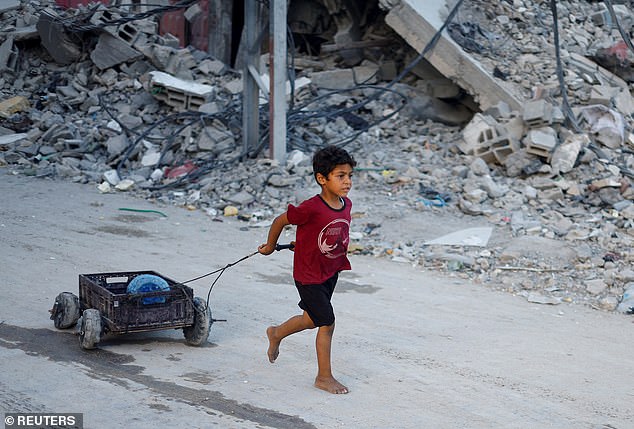Palestinians displaced by the Gaza war live in “appalling” conditions, with children sometimes going an entire day without food and thousands of people sharing the same bathroom, Oxfam warned on Tuesday.
In recent weeks, deadly Israeli bombing and fighting have occurred in the Rafah area at the southern end of the Gaza Strip, near the border with Egypt, once again displacing those who had fled there in search of safety.
Oxfam said families in some parts of southern Gaza, such as the coastal area of Al-Mawasi, designated a “humanitarian zone” by the Israeli military, were getting by with almost no water or sanitation services.
“Living conditions are so appalling that in Al-Mawasi there are only 121 latrines for more than 500,000 people, or 4,130 people who have to share each bathroom,” Oxfam said.
Meera, an Oxfam staff member in Al-Mawasi who has been displaced seven times since October, described conditions there as “unbearable”.
“There is no access to drinking water and people are forced to depend on the sea,” he said.
Oxfam said it is estimated that more than two-thirds of Gaza’s population are crammed into less than a fifth of the besieged territory (File Image)
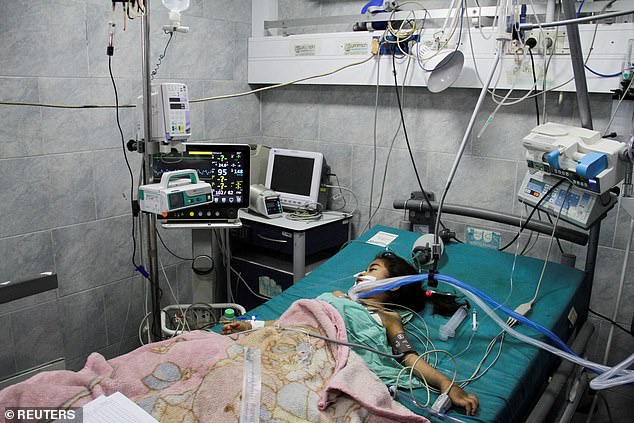
A Palestinian child suffering from malnutrition receives medical attention at the Kamal Adwan hospital in the northern Gaza Strip.
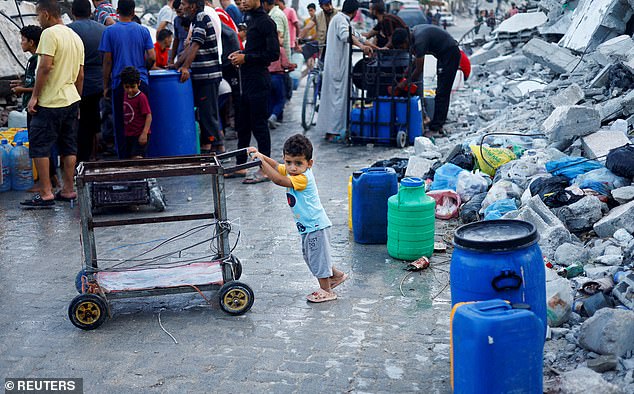
A Palestinian child next to water containers, in the midst of the current conflict between Israel and Hamas.
Since Israeli troops launched their ground attack on Rafah on May 6, an average of eight trucks of aid have come in per day, Oxfam said, citing UN figures.
While it is estimated that hundreds of commercial food trucks enter daily, the products on board include non-nutritious energy drinks, chocolate and cookies, and are often very expensive, he added.
“By the time famine breaks out, it will be too late,” said Oxfam’s Middle East and North Africa director Sally Abi Khalil.
“Clogging up tons of food for a malnourished population while being agitated with caffeinated drinks and chocolate is disgusting.”
Oxfam’s claims are in direct contrast to claims made by Israeli Prime Minister Benjamin Netanyahu, who, in an interview last week, rejected allegations of famine in Gaza, saying that everything possible had been done to prevent a famine.
Gazans were consuming 3,200 calories a day or 1,000 more than the daily requirement, he said.
More than a million people have fled Rafah for other areas, according to the UN agency for Palestinian refugees, UNRWA.
Oxfam said it is estimated that more than two-thirds of Gaza’s population is crammed into less than a fifth of the besieged territory.
“Despite Israeli assurances that full support would be provided to people fleeing, most of Gaza has been deprived of humanitarian aid, as famine draws ever closer,” the aid agency said.
“A food survey conducted by aid agencies in May found that 85 percent of children did not eat for an entire day at least once in the three days before the survey was taken,” he added.
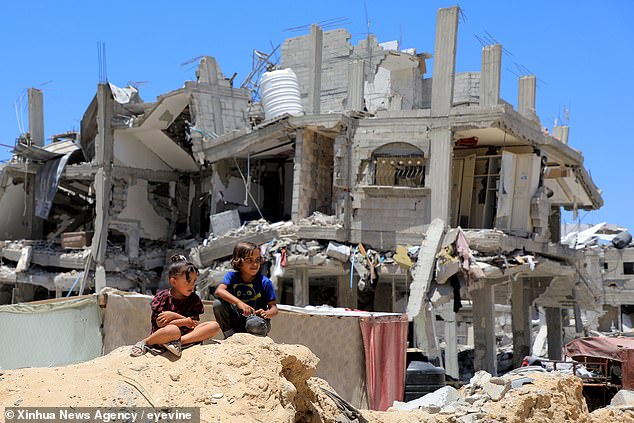
Palestinian children sit on the rubble of their destroyed house in the town of Khan Younis, southern Gaza Strip.
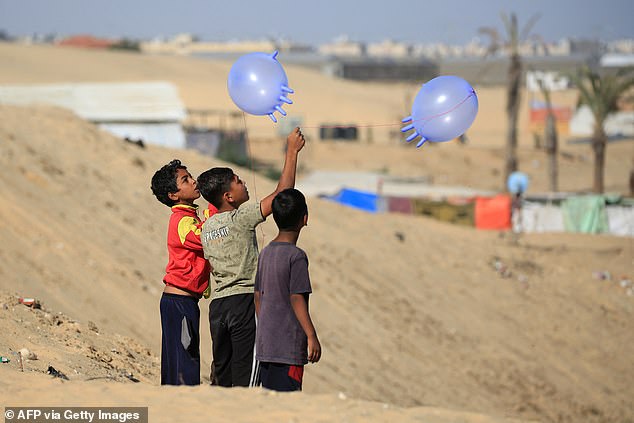
Displaced Palestinian children play with surgical rubber gloves in Rafah, southern Gaza Strip.
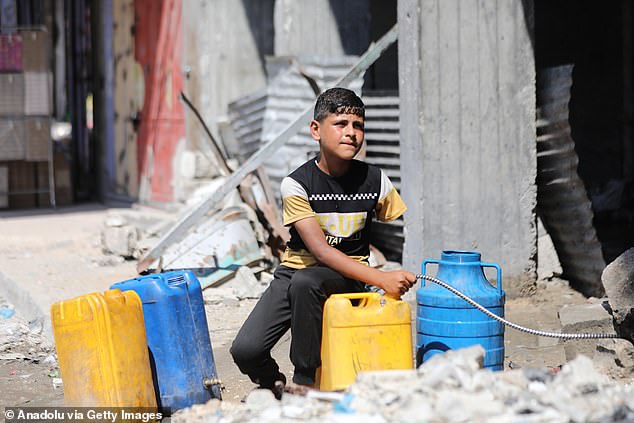
Palestinian children try to continue with their daily lives in harsh conditions
On Monday, sewage flooded a displaced persons camp in Khan Younis after a sewage pipe burst, an AFP journalist said, and some tried to remove dirt from their tents with plastic bottles.
The war was triggered by Hamas’ unprecedented attack on Israel on October 7, which killed 1,194 people, mostly civilians, according to an AFP tally based on official Israeli figures.
The militants also took 251 hostages, 120 of whom remain in Gaza, including 41 who the army says are dead.
Israel’s retaliatory offensive has killed at least 36,550 people in Gaza, also mostly civilians, according to the Hamas-run territory’s Health Ministry.


